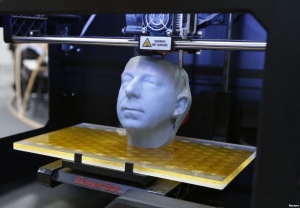Difference between revisions of "3D printing"
| Line 18: | Line 18: | ||
===Concerns=== | ===Concerns=== | ||
| + | As of now, this adaptive infrastructure [http://www.atlanticcouncil.org/images/publications/The_Next_Wave_4D_Printing_Programming_the_Material_World.pdf] | ||
Revision as of 01:51, 21 February 2017
Contents
About 3D Printing
History
When did 3D printing start: Evolution from 2D:
Ethics
Looking Towards the Future
4D Printing
4D printing incorporates one more dimension: the function of time. The team dubbed "Self-Assembly Lab"[1] at Massachusetts Institute of Technology collaborated with Stratasys, a major 3D printing manufacturer, and the software corporation Autodesk Inc to develop a custom-built and adaptable technology[2].
As an extension of 3D printing, 4D printing aims to skip the step of assembling the printed material ourselves to having them self-assemble as well as autonomously reshape over time. These programmable materials are created with multi-material 3D printing and their responses to changes in environment (mimicked with simple energy inputs of water, heat, and light), as well as geometric code [3].
Skylar Tibbits, a co-director and founder of Self-Assembly Labs, gave a demonstration of 4D printing at a TED Talk in 2013[4], showing how a single 1D strand dipped in water could proceed to self-fold into the letters 'M I T'.
Concerns
As of now, this adaptive infrastructure [5]
